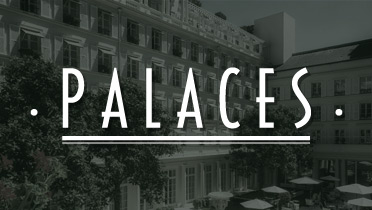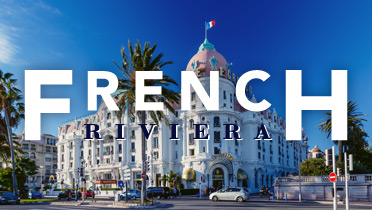India, New Delhi
The Park New Delhi
The Park New Delhi design hotel, in the heart of India’s capital city, illuminates the streets of the Connaught Place quarter with blue neon lights. Sprung from the imagination of the celebrated British designer, Terence Conran, this luxury boutique hotel is daringly ultra-modern, almost futuristic, plunging guests into a trendy universe. The hotel’s eclectic, sophisticated interiors and fresh vivid colors make the Park New Delhi a worthy member of the prestigious Design Hotels group. The 209 rooms and 11 suites are colorful, minimalist, pop and classical, giving them an experimental laboratory aspect. This cozy and trendy address is ideal for businessmen coming through the capital.
New Delhi
Upon his return from the “land of spirituality”, the renowned French writer André Malraux was deeply impressed and called India “the other pole of our life”. The disconcerting reality of India acts on our perceptions, upsets our senses and urges us into contemplation. Nothing is without contradiction in this land of contrasts where magnificence and opulence live side by side with poverty and misery. The complex and mysterious capital of India, Delhi is a prime example of these contradictions. This city with multiple identities has been marked by the imprint of Moghol sovereigns, before being administered and reshaped by order of King George V of England. Time here seems to function at two different and distinct speeds. Although picturesque and traditional, old Delhi with its maze of dark narrow streets is teeming with people, with shouting and with a number of unpleasant odors. New Delhi on the other hand is modern and well to do, designed using the plans of British architect, Sir Edwin Luytens and is representative of a westernized India rising up to the rank of a major player in the world economy.
A modern oasis
At nightfall, the windows of The Park New Delhi illuminate the sky with their bluish neon lights. As the crowds gradually leave the streets of the Connaught Place quarter, the first occupants of the Park ensconce themselves in the fuchsia sofas of its ultra modern bar, ready to try a cocktail between two visits to the dance floor. The hotel, a contemporary oasis in the heart of New Delhi, caters to business travelers passing through the capital. Created out of the imagination of the celebrated British designer, Terence Conran, founder of the Habitat chain of stores, the eclectic and sophisticated interiors possess a colorful, minimalist, pop and classical atmosphere. Decorated in turquoise, fuchsia and anise with transparent partitions and white pearl curtains, Conran uses traditional Indian architectural codes to create a semi-futuristic aura in the image of an India turned resolutely toward everything modern, and whose exponential economic growth seems to be without end. Trendy and contemporary, The Park New Delhi is a perfect taking off place for the conquest of the city.
The hotel, in its desire to be part of the policy of environmental preservation, has just received LEED certification (Leadership in Energy and Environmental Design), thus becoming one of the primary ecological establishments in India. - marieclairemaison.com
details about this hotel
Description:
Five stars / Member Design hotels / Boutique hotel / Luxury / Modern / High tech / Three restaurants with Indian & western cuisine / Pool bar / Aura Spa / Hair salon / Outdoor swimming pool / resident DJ
When open:
Open all year
Number of rooms and suites:
209 rooms and 11 suites
Prices:
Double occupancy from 79 euros
Nearest airport:
New Delhi Indera Gandhi Airport (DEL) - Delhi
Hotel details:
THE PARK NEW DELHI
15 Parliament Street
New Delhi 110 001
India
details about this country
Flight time from Paris:
Approximately 10 to 15 hours (depending on the destination)
Time difference from Paris:
+ 3h30 in summer / + 4h30 in winter
Climate:
India has three seasons:
- The rainy season (monsoon : heavy rain + heat) from June to October
- The cool season (October to March : generally mild temperatures)
- The hot season (February to June : torrid heat from 30°C to 50°C)
Necessary travel documents for French nationals:
Passport valid six months after return date
Visa required and valid for six months
Visa requests should be made at a consulate, 40 days before departure.
No vaccinations required
Currency:
The Indian rupee (INR)
Languages spoken:
Hindi, English
15 official languages and 1,500 dialects and minor languages
Book by phone
+33 1 75 43 70 26 *Our reservation department is always happy to assist you via phone or via email. We are open Monday to Friday 9am to 18pm (GMT +1).
- Best rates guaranteed
- Upgrade upon availability
- No booking fees
- Instant confirmation























